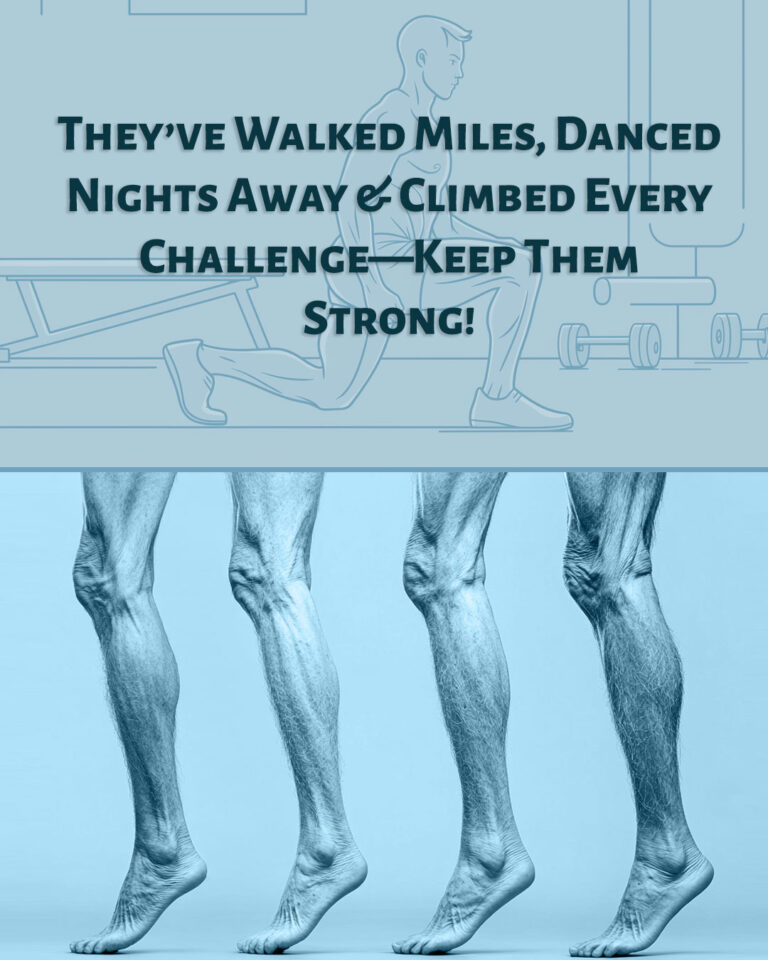At Age 20: Sprinting Through Life
You’re likely using your legs to run to class, chase adventure, or dance all night without a care. Muscle recovery is quick, injuries heal fast, and you hardly ever stop to think about your knees. Why would you? They feel invincible.
At Age 30: Strength Meets Reality
Your legs are still strong, but life has changed. Maybe you’re chasing toddlers, building a career, or training for your first marathon. You’ve started to notice that stiffness in the morning is a thing, and after a weekend of “feeling 25,” your knees kindly remind you… you’re not.
At Age 40: The Warning Signs
This is when muscle mass starts to decline if you’re not actively working to keep it. You might feel twinges in your knees going up stairs, or your hamstrings protest after a long sit. But here’s the secret: Strength training and mobility work can turn back the clock.
At Age 50: Use It or Lose It
Balance starts to shift. If you’ve stayed active, you’re probably feeling great! But if not, you might notice your legs feeling weaker, tighter, or slower to recover. This is when building leg strength directly translates to long-term mobility and independence.
At Age 60 & Beyond: The Strength to Stay Independent
Now we’re playing the long game. Your legs determine your mobility, balance, and even your longevity. Studies show that leg strength is one of the biggest predictors of how well you’ll move later in life. Strong legs = fewer falls, more independence, and staying active well into your 80s and beyond.

